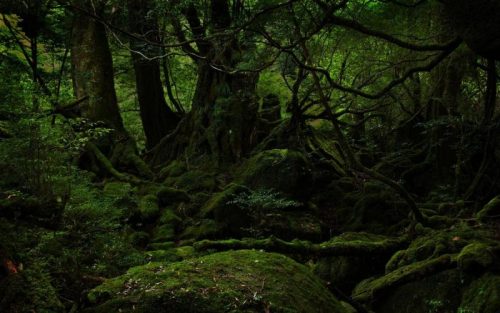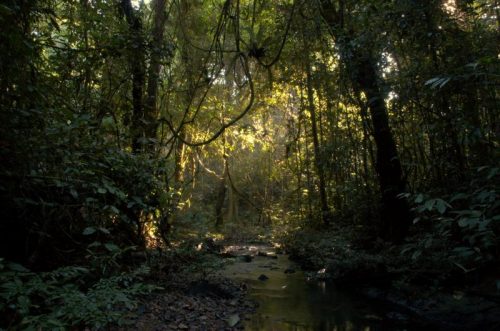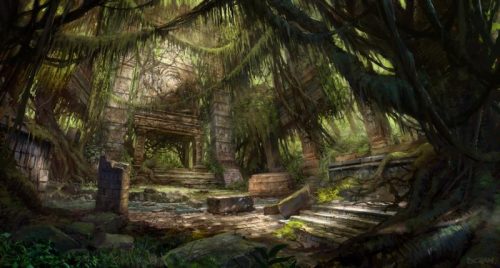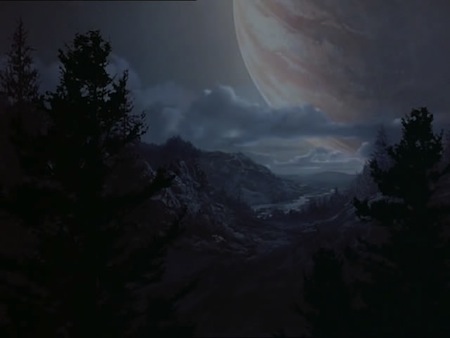Today someone mentioned the idea to me that most decent pulp settings appear to have some cool major distinctive feature that also works as a kind of source for all manners of conflicts within the world. For example in Dark Sun, the magical technique of defiling was what killed most life on the planet, is what gives the sorcerer kings their power, and allows them to keep the few surviving cities from being burried by the desert as well for the time being. In Star Wars the Dark Side of the Force created the Empire, drove the Jedi to extinction, and also is the main reason why the Jedi exist as an order of knights in the first place. In Morrowind the Tribunal and their belief to be living gods led to the creation of the Dunmer, their extreme conservatism and hostility towards outsiders, and the existance of the Ashlanders. And in the vast majority of stories of Conan the whole trouble comes from sorcerers desiring power. I think to make my Old World setting more pulpy than my old Ancient Lands setting, some kind of similar universal driver of tension could possibly be a great help.
A few weeks ago I read a post by someone writing about having seen a somewhat unusual nature documentary that showed life in the wilderness just how it is without overly dramaticising it. And it seemed to him to show that nature is not at all nice and pleasant, but really full of violent death. The vast majority of it being the deaths of children. Around the same time I’ve read a post by Zak S. about Lovecraft’s fear of the unknown being mostly a revulsion against life, which I found to be very convincing. Life means feeding and reproducing which in many cases, or perhaps even most, is neither pleasant not pretty.
In my years at university dealing with cultural studies I made the discovery that almost all major religions disapprove about the physical aspects of living and promote a detachment from bodily things and a focus on the purely mental. And it really made me wonder why all religions that praise and approve of living seem to promote having sex with the cult leader? I’ve been wanting to do something with a very body-positive approach in a non-creepy way in my worldbuilding for a long time but never really got around to it.

And I think here might be the perfect opportunity to adress all these things. I had often thought of the Old World as being “a lot like Dark Sun, but with forests instead of desert”. In Dark Sun the driving force behind all conflicts is magic that drains nature of life. How about a setting in which the source of conflict is an overaboundance of life?
Life is not just life. It is also death. The Circle of Life is also a Circle of Death. To actively live all living things have to consume. In the end everything dies, and then it gets eaten. The only way a species can survive is to reproduce faster than its members are getting killed. It’s an endless breeding and feeding. Breeding is feeding. And in the center of all this killing and reproducing are people. And nature doesn’t care for them a bit. Like it does for anything else. The cycle just continues and there is nothing that one could do to stop it. People simply have to arrange themselves with this simple truth. And this process of arranging is where ultimately all conflict comes from. The desire to feed yourself and your relatives and to avoid being fed upon for as long as you can is what all conflict ultimately comes down to.

I’m still not 100% sure if I really want to go with this. Things like these always take two or three days with me before I know how I really feel about them. But I think there’s certainly a lot of potential to give the setting it’s own distinctive character and quirks, which really is a major thing in Sword & Sorcery and pulp in general. Here are some applications I have already in mind:
Civilization is fragile: This is something I’ve had in my mind for a long time now. I don’t want to do the standard fantasy thing where the world was once great and then everything declined into some kind of post-apocalyptic world or another. Instead the Old World is a world in a constant cycle of growth and decay. Settlements are founded, grow, decline, and are eventually abandoned or destroyed to be reclaimed by the wilderness. This has happened countless times before and will happen countless times again. Abandoned and ruined settlements are found everywhere in regions that are settled by people. There are many great stone ruins as well, which had been build by the various fey folks. They are still found in many places and many of them hold magical wonders beyond the powers of mortals. But their builders were not killed by some kind of catastrophe. In truth their reign over the land came to an end when they realized that even with their great magical powers the attempts to build lasting kingdoms and empires was futile in the face of the power of nature itself. Shie, naga, raksha, and giants are still around, but they all live in the Spiritworld once more, as they did for countless eons before.

The Green Folk: I’ve long been a fan of both treant and spriggans (duh…) and also like the idea of shambling mounds and other big beasts made from vines, branches, thorns, and moss. All these walking plant spirits are collectively known as the green folk. There are many types of them and they are literally found everywhere not covered by water or ice. In a way they might be the true masters of the world but they normally care little for either mortals or fey.
The Swarm: It’s not only plants that dominate the Old World, but also animals as well. In particular insects which though small outnumber all the larger beasts combined. Though not all insects are simple tiny bugs. Every now and then huge swarms of big insect creatures appear from seemingly nowhere and by the time they start stripping the surrounding region of all available food they have already been building their nest to raise even larger numbers of young. The swarm is a natural disaster that can happen anywhere where there is food to be found, which is almost everywhere. The immediate surroundings of a nest are soon reduced to barren wastelands but drones swarm out for many more miles to hunt for any kind of meat they can find. The only protection is to bar oneself up in a cellar and wait for the swarm to move on, which can often take several days. Once the hunting stops, the nest is soon abandoned with the creatures seemingly vanishing into thin air again. Many believe that they are not ordinary animals but instead creatures from the Spiritworld, perhaps to forrage for food for their young before they return back to their home.




